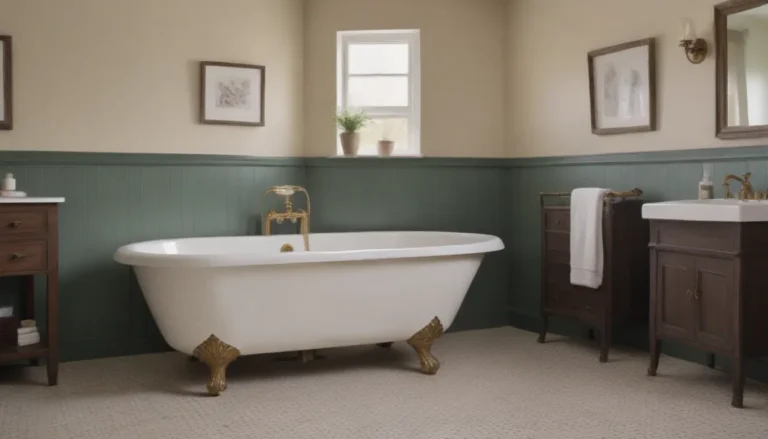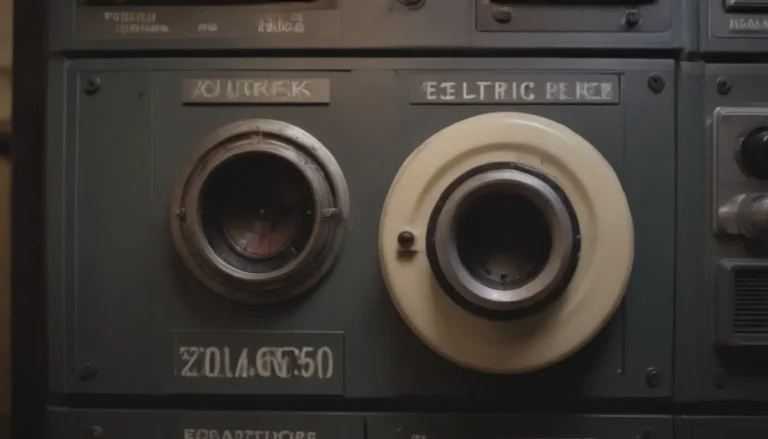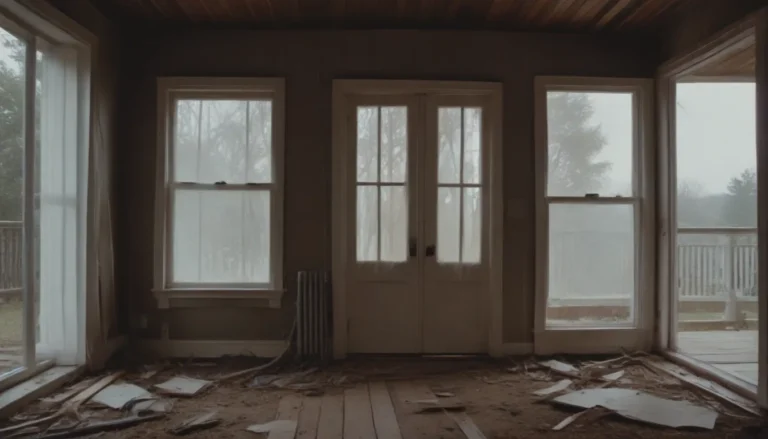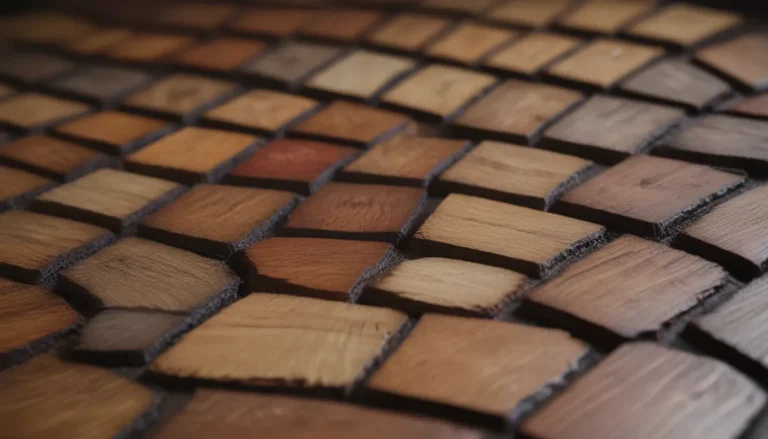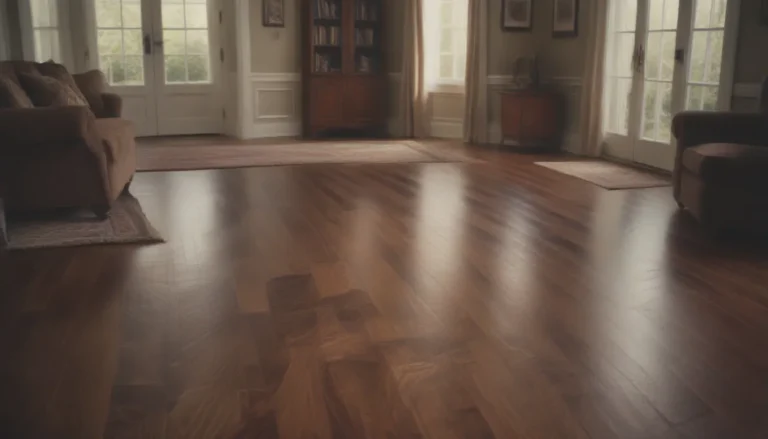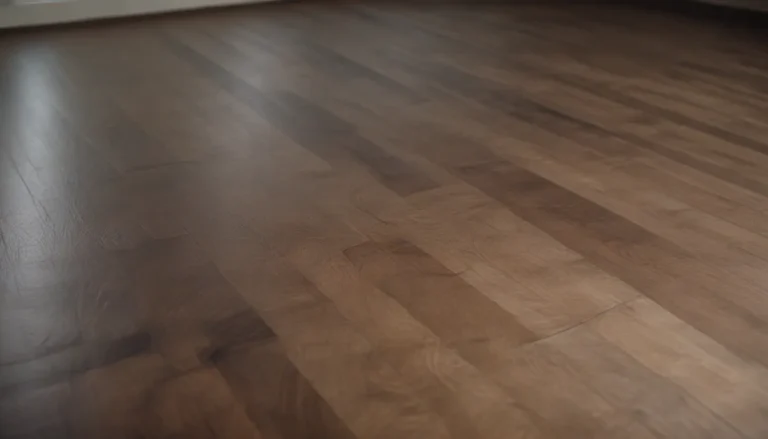The Ultimate Guide to Travertine Flooring: Everything You Need to Know

Travertine is a luxurious form of limestone that has been a popular choice for flooring for centuries. Its elegant appearance and durability make it a desirable option for homeowners looking to add a touch of sophistication to their living spaces. In this comprehensive guide, we will explore the pros and cons of travertine flooring, discuss the costs, maintenance, repair, design options, installation process, and much more. Whether you are considering travertine for your home or simply want to learn more about this timeless stone, this guide has all the information you need.
What Is Travertine Flooring?
Travertine is a type of limestone that is formed around mineral spring deposits. It is commonly used as a flooring material due to its durability and attractive earth-tone colors. The stone is typically sold in tile form and comes in a variety of hues, including tans, browns, rust, and beige. While travertine is easier to care for than some natural stones, it is heavy and porous, requiring regular sealing to maintain its beauty. When properly installed and maintained, travertine flooring can enhance the elegance of any interior space.
Pros of Travertine Flooring:
– Stylish and dignified appearance
– Durable and long-lasting
– Adds real estate value to the home
Cons of Travertine Flooring:
– Expensive compared to other flooring materials
– Requires periodic sealing
– Can feel cold and slippery underfoot
Travertine Flooring Costs
Travertine is considered a mid-range stone in terms of cost, making it a high-end option for flooring materials. On average, travertine flooring costs around $15 per square foot for materials and labor. While this may seem pricey, the quality and finish of the stone can significantly impact the overall cost. The price of travertine flooring can range from as low as $3 to as high as $30 per square foot, depending on the quality and finish of the stone.
Types of Finishes:
– Natural texture (least expensive)
– Honed, polished, and sealed surface (most pricey)
Maintenance and Repair
Maintaining travertine flooring is essential to preserve its beauty and longevity. The stone’s porous nature makes it susceptible to stains and spills, so applying a penetrating sealer and barrier surface sealer is crucial during installation. Regular resealing is necessary to protect the surface and maintain its glossy appearance. Fortunately, cleaning travertine flooring is relatively simple, requiring only damp mopping with a mild soap solution.
- Travertine can be susceptible to scratching and weathering over time
- Damaged tiles can be replaced by carefully removing and replacing them
Design Options
Travertine is one of the oldest building materials and adds a sense of age and prestige to any home. Its dominant energy draws attention in a subtle way, with mild tones swirling in its surface effects. Each piece of travertine is a nature-formed work of art, creating a unique installation. The soft palette of colors, including tans, beiges, grays, and speckled off-white hues, adds a sense of earthy elegance to any space.
Travertine Flooring Installation
Installing travertine flooring is similar to ceramic tile installation, but it comes with its own set of challenges. The stone’s weight requires a strong and stable floor structure to support it without bowing or flexing. Furthermore, cutting travertine requires a power wet saw with a diamond blade, as ordinary tile-cutting tools are not sufficient. Due to these complexities, professional installation is recommended to ensure a successful and long-lasting floor.
Tips for Installation:
– Use a layer of cement board underlayment for stability
– Apply a sealer before grouting to prevent staining
– Keep extra tiles for future repairs
Top Brands of Travertine Flooring
When purchasing travertine flooring, the classification of the stone is more important than the brand. Polished, honed, tumbled, and brushed are common classifications that impact the appearance and quality of the travertine.
Comfort and Convenience
Travertine flooring tends to retain its temperature, making it cold in winter and retaining heat in summer. Area rugs can help minimize the discomfort of cold floors in the morning. Travertine is also compatible with radiant heating systems, providing gentle warmth to the room once heated.
Travertine vs. Porcelain Tiles
Porcelain tiles are a more affordable alternative to natural stone like travertine. While porcelain tiles can mimic the look of travertine, they are easier to install, more durable, and less expensive. Stone-look porcelain tiles are a popular choice for homeowners seeking the elegance of travertine without the high cost.
Is Travertine Flooring Right for You?
Travertine flooring is a premium natural stone material that is perfect for homeowners looking to add antique elegance to their homes. If you are willing to invest in periodic maintenance and appreciate the timeless beauty of travertine, this stone is an excellent choice for your flooring needs. However, if you prefer a more affordable and low-maintenance option, consider stone-look porcelain tiles as an alternative.
In conclusion, travertine flooring is a luxurious and timeless choice for homeowners seeking to add sophistication and elegance to their living spaces. With proper care and maintenance, travertine flooring can enhance the beauty and value of any home. Whether you choose travertine for its natural beauty or opt for porcelain tiles for a more budget-friendly option, both choices offer durability and style for years to come. Consider your budget, maintenance preferences, and design aesthetic when choosing the flooring material that best suits your needs.
